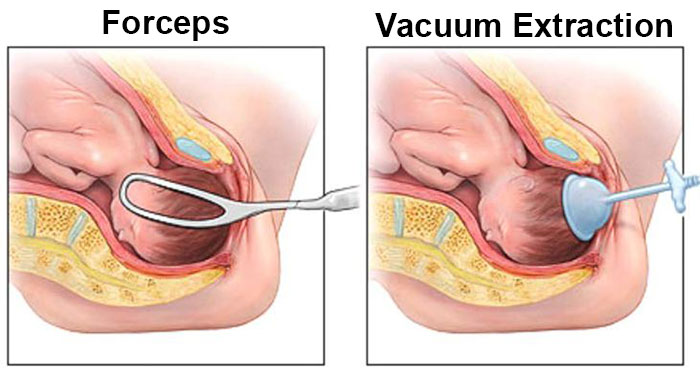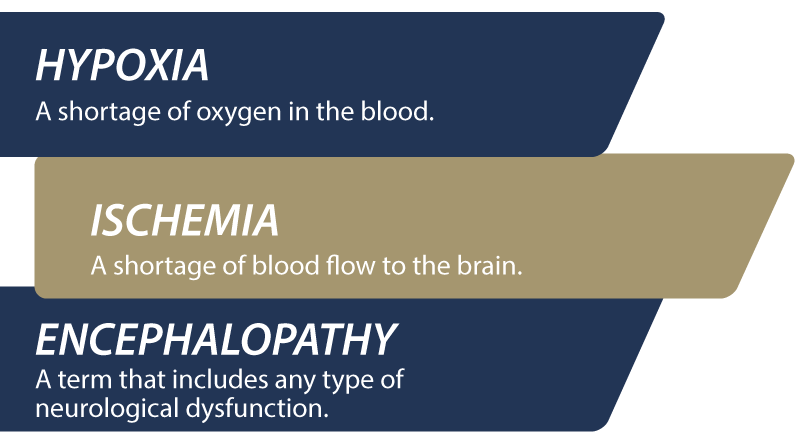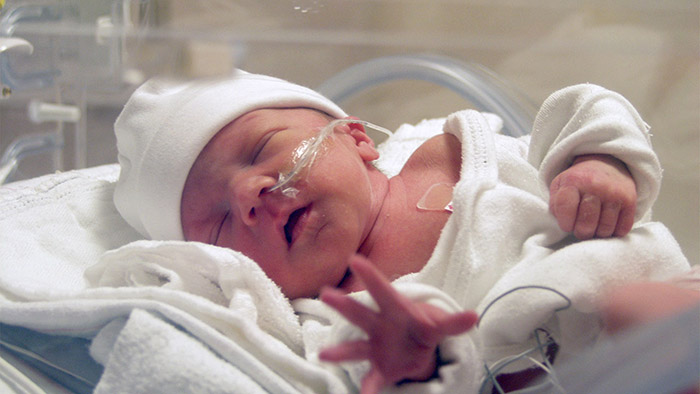What is OB-GYN Medical Malpractice?
A mother’s health is vulnerable during pregnancy; staying in good physical condition is extremely important to her and her baby’s wellbeing. During this time, her care is entrusted in the hands of her obstetrician/gynecologist (OB-GYN).
An OB-GYN typically guides the expecting mother through the pregnancy process, from early prenatal testing to labor and delivery. They are also there to address pregnancy complications and any other concerns or risks that the mother or baby might experience during the pregnancy or delivery.
But sometimes, an OB-GYN makes a preventable error or misses critical signs of a problem. In the worst cases, the mother or her child suffer from these mistakes and sustain devastating birth injuries that alter the trajectory of their lives.

Very few medical professionals are more involved in a mother’s pregnancy than her OB-GYN. When an OB-GYN misses the signs of a pregnancy complication, makes errors when delivering the baby, or fails to treat a neonatal birth complication, it can lead to avoidable birth injuries like hypoxic-ischemic encephalopathy (HIE).
HIE is a serious brain injury that occurs when the baby is deprived of oxygen (hypoxia) and blood flow (ischemia) to the brain for a prolonged period. It is the leading cause of cerebral palsy and can lead to cognitive and physical disabilities, developmental delays, and seizure disorders. But when a baby develops HIE or another birth injury as the result of an OB-GYN’s negligence, their family may be able to receive justice through filing a medical malpractice claim against them.
Over the past three decades, the nationally recognized team of birth injury lawyers, registered nurses, and nurse-attorneys at Miller Weisbrod Olesky have established a proven track record of delivering justice for children and families across the United States who have suffered from all types of birth injuries.
We are prepared to meticulously investigate the circumstances of your case, gather crucial medical records, consult with top medical experts, and fight tirelessly to secure the compensation you deserve for your child's injury.
We represent families and their birth-injured children throughout the United States. You can contact us today to schedule your free legal consultation by calling our toll-free line at 888-987-0005 or by filling out our online request form. We work on a contingency fee basis, meaning you won't pay any legal fees unless we win your case. We only receive payment once you do.
Free Legal Consultation
Birth Injury Lawyers
1-888-987-0005Our Birth Injury Lawyers are available to meet you in your home or the hospital.
What Is An OB-GYN?
OB-GYN is an abbreviation of the words “obstetrician” and “gynecologist.” An obstetrician is a doctor who specializes in pregnancy, childbirth, and postpartum care. A gynecologist is a doctor who specializes in the female reproductive system who can diagnose and treat conditions related to a woman’s uterus, ovaries, cervix, fallopian tubes, and vagina. An OB-GYN takes on the responsibilities of both an obstetrician and a gynecologist, working to ensure that the mother’s pregnancy progresses safely for her and her unborn child.

Like other doctors, OB-GYNs must complete a bachelor’s degree, 4 years of medical school, and a 4-year residency in obstetrics and gynecology. Sometimes they will follow up their residency with a fellowship program for further specialization in a specific area. They must also pass board certification to obtain their license to practice.
What are Common OB-GYN Mistakes?
An OB-GYN’s responsibilities to the expecting mother can be broken into three parts: providing care during her pregnancy, assisting during labor and delivery, and caring for her shortly after birth.

During each of these phases, opportunities exist for healthcare providers to make consequential mistakes that will put the mother’s health and her pregnancy in jeopardy. It is the duty of skilled OB-GYNs to recognize these mistakes and use their knowledge and expertise to avoid them:
Mistakes During Pregnancy

Missing Pregnancy Complications: During prenatal testing checkups, the OB-GYN must conduct a number of ultrasounds, blood samples, urine tests, and other assessments to check for common pregnancy complications. When an OB-GYN misreads the results of these tests or fails to conduct a specific test, it can lead to a complication going undetected.
Common complications that OB-GYNs miss include a mother’s gestational diabetes or preeclampsia in the later stages of pregnancy. Abnormal fetal positioning or problems with the umbilical cord can also go unnoticed when OB-GYNs conduct insufficient ultrasounds or misinterpret their results.
Pregnancy complications carry less risk of long-term harm when they’re caught early on. OB-GYNs must be thorough when conducting early maternal testing to identify any symptoms of a problem and treat it accordingly.
Medication Errors: When addressing a pregnancy complication, OB-GYNs sometimes administer the incorrect medications or too high or low of a dosage to effectively treat the issue. In other cases, an OB-GYN may neglect to administer medication altogether when the mother needs it.

A common example of these errors is when an expecting mother has risk factors or shows signs of a premature labor. Corticosteroid medications like Betamethasone injections can help with fetal lung development, which reduces the risk of infant mortality. However, when the incorrect dosage is given, it can increase the mother’s risk of a prolonged and arrested labor. This can threaten the baby’s fetal oxygen supply and increase the risk of hypoxic brain damage like HIE.
It’s important to note that medication errors can happen at any stage of a mother’s childbirth process. OB-GYNs and all other medical professionals must exercise extreme caution when prescribing or administering any type of medication to their patients.
Mistakes During Labor and Delivery
The labor and delivery process is physically strenuous for both the mother and the baby. During this time, OB-GYNs are responsible for avoiding these common labor and delivery mistakes:
- Failing to Monitor Fetal Distress: During labor and delivery, OB-GYNs and other members of the delivery team must use fetal heart rate monitoring strips to carefully monitor any abnormalities. Fetal heart rates dipping too low can indicate that the baby isn’t receiving sufficient oxygen or blood flow to their organs.

A baby in fetal distress is a medical emergency and requires swift action, including artificially inducing labor, using birth-assistive tools, or performing an emergency C-section delivery when necessary. When an OB-GYN fails to monitor a baby’s non-reassuring fetal heart rates, it increases their risk for hypoxia and associated brain injuries like HIE. - Delaying a Cesarean Section Delivery: An emergency C-section delivery becomes necessary when OB-GYNs deem vaginal birth to pose too high of a risk to the mother. A number of complications can threaten the safety of vaginal birth, including fetal distress, prolonged labor, uterine hyperstimulation or tachysystole, preeclampsia, or cases of fetal macrosomia where the baby is too large to safely fit through the mother’s cervix.

The American College of Obstetricians and Gynecologists (ACOG) recommends that emergency C-sections start within 30 minutes from the time the decision is made until the first incision. But ACOG recognizes that some C-sections must be performed faster depending upon the emergency condition.
Such conditions can include fetal heart monitor strips showing a dangerous lack of oxygen to the baby, a mother’s uterine rupture, umbilical cord prolapse, or a placental abruption or placenta previa. An OB-GYN must be equipped to perform a C-section if needed and start it promptly without delay for the best chance at avoiding birth complications. - Improper Use of Birth-Assistive Tools: Sometimes labor and delivery complications cause a baby to get stuck in their mother’s birth canal. When this happens, an OB-GYN may need to use birth-assistive devices to ease the baby out. The most common delivery devices are forceps and vacuum extractors.
Forceps are used to gently latch around the baby’s head while the OB-GYN applies traction and tugs carefully. The mother is also pushing while this is happening. With a vacuum extractor, a suction cup is placed to the top of the baby’s head and the OB-GYN uses traction to gently pull them out.

With both tools, OB-GYNs run the risk of causing head trauma or other harm to the baby when they use excessive force. Too much pressure on the baby’s head can lead to birth injuries like skull fractures, caput succedaneum, cephalohematoma, and intracranial hemorrhages (brain bleeds).
Complications for the mother tend to be minor pain, lacerations, and hematomas. But newborns may sustain birth injuries that last for a lifetime. Brain damage due to vacuum extraction can be a catalyst for cerebral palsy, cognitive disabilities, developmental delays, and seizure disorders.
When these injuries are caused by medical malpractice or medical negligence from the OB-GYN, families may be entitled to compensation that provides a better quality of life for their child.
Mistakes After Birth
The OB-GYN’s job isn’t quite finished once the baby is delivered; they are responsible for treating any birth complications that arise shortly after the mother’s labor. In the moments following birth, an OB-GYN and all other involved healthcare providers must stay alert to avoid medical negligent errors:
Missing Postpartum Complications: After experiencing a labor and delivery complication, a mother may sustain certain injuries like postpartum hemorrhaging (excessive bleeding), maternal infections, or a retained placenta (retained products of conception or RPOC).
OB-GYNs must be aware of the risk factors that increase a mother’s chances for experiencing a postpartum complication. The most common risk factor is an emergency C-section delivery. Neglected incisions can easily get infected or cause internal hemorrhaging that puts the mother’s life at risk. Excessive bleeding and C-section errors are among the top causes of maternal mortality in the world.
Additionally, failing to administer the proper medication for an infection after birth can allow it to spread and break down the mother’s immune system. An OB-GYN must take note of the mother’s vitals signs after birth to confirm she isn’t showing symptoms of an infection. They may also need to take blood samples or run other tests to confirm she is healthy.
Missing Neonatal Complications: Upon birth, the OB-GYN or another certified medical professional will assign the child an APGAR score. The APGAR score is an assessment of five physiological categories:
- Appearance
- Pulse
- Grimace
- Activity
- Respiration
A rating from zero to two points is assigned to each category, with the total of all five categories equaling the final score.

An APGAR score above 7 is generally considered normal and reassuring, whereas scores below 7 may be a cause for concern.
A child’s APGAR score can indicate signs of a neonatal birth complication like respiratory distress syndrome or fetal bradycardia. It can also indicate that the child has suffered from a brain injury like HIE.
These types of complications require quick intervention with medical procedures and therapies like neonatal resuscitation or brain cooling treatment. In some cases, the OB-GYN may not be the one conducting these treatments, but they may be responsible for identifying that treatment is needed.
Other common neonatal complications include hypoglycemia and jaundice. These can be diagnosed through blood and glucose tests, along with observation of the baby’s physical appearance and behaviors. For example, skin with a yellowish tint can be a sign of high bilirubin levels and jaundice, and weak cries mixed with shakiness and lethargy can indicate low blood sugar levels.
OB-GYNs must have a sense of what’s normal in neonatal appearance and behavior so they can quickly spot abnormalities and signs of a potential illness or injury. Failing to do so can constitute medical malpractice in some cases.
Failing to Schedule Follow-Up Visits
Some maternal complications do not immediately present after birth. An OB-GYN will typically schedule a follow-up visit with the mother around 3 to 6 weeks after her baby’s birth. The appointment is a key time for the OB-GYN to monitor the mother’s physical, mental, and emotional state.
During this visit, the OB-GYN will conduct a series of exams such as a pap smear and pelvic exam to confirm the mother is healing properly from her delivery. They may ask her questions about any issues with feeding, sleeping, or other concerns she may have regarding her child’s wellbeing. The OB-GYN will also ask the mother about her own mental health; recent studies have estimated that between 10-15% of women in the United States are diagnosed with postpartum depression.
The American College of Obstetricians and Gynecologists (AGOG) recommends that a mother’s first postpartum follow-up should be within 3 weeks for optimal results.
They also recommend multiple visits in the 12 weeks after birth, nicknamed the “4th trimester.” If a mother’s OB-GYN neglects to provide sufficient antenatal care, they risk missing serious complications that can develop postpartum.
What Birth Injuries Stem from OB-GYN Mistakes?
The most common obstetrical error that results in birth injuries is a delay of care. Whether it’s delaying treatment for a pregnancy complication, delaying administration of medications, or delaying an emergency C-section, OB-GYNs put the life of the mother and her child at risk when they unnecessarily stall treatment. Examples of potential birth injuries a baby may endure because of OB-GYN mistakes include:
Hypoxic-Ischemic Encephalopathy
Hypoxic ischemic encephalopathy is a type of brain injury that occurs when the baby’s brain is deprived of oxygen and blood flow. Hypoxic ischemic encephalopathy (or HIE) can occur prior to birth, during labor and delivery, or shortly after birth. The length and amount of oxygen deprivation to the brain will determine the severity of brain damage caused by HIE.

Babies with a truly mild form of hypoxic-ischemic encephalopathy may not suffer any long-term effects, but babies with moderate to severe HIE may eventually suffer from cerebral palsy, developmental delays, cognitive impairments, and/or epilepsy. Babies with this birth injury may exhibit early signs, such as abnormal muscle tone, poor reflexes, lack of alertness, breathing difficulties, feeding problems, low APGAR scores, and/or seizures.
HIE can be a consequence of a prolonged or arrested labor. While in labor, a mother’s contractions temporarily restrict the baby’s access to blood and oxygen flow. This process is natural, but a baby can only go so long with diminished oxygenation before they become at risk for an injury. This can also occur when a mother experiences excessive and abnormally strong uterine contractions (hyperstimulation).
Knots or compression of the baby’s umbilical cord can also restrict oxygenation and blood flow, resulting in hypoxic and ischemic injuries.
When OB-GYNs and all other medical professionals observe an unborn baby in fetal distress, it is a sign they are receiving insufficient oxygenation and need to be delivered immediately. This may mean artificially inducing labor or performing an emergency C-section when necessary.
Birth Asphyxia
Birth asphyxia – clinically known as critically impaired gas exchange in the intrapartum phase (time from the labor onset to placenta delivery) – is a major cause of brain damage for babies. A primary cause of this is fetal distress, which can be induced by a number of factors including prolonged labor, tachysystole, placental abruption, uterine rupture, or head compression during labor.

Children with birth asphyxia during labor, delivery, or as a newborn may suffer permanent or severe brain damage including HIE and cerebral palsy. The prognosis can vary according to the severity of brain damage, co-morbidities (other health conditions), and the child’s general health. The extent of damage usually depends on:
- The degree/level of oxygen deprivation
- The duration of oxygen deprivation
- How fast the right treatment was administered
Apart from the brain, birth asphyxia may also affect other organs such as the heart, kidneys, lungs, and bowels. In extreme cases, total organ failure or the death of the baby may occur. Children who experience permanent organ damage usually need extensive care, including lifelong therapy and medications, constant supervision, and special education.
When OB-GYNs are able to make a timely diagnosis and utilize appropriate treatment strategies, severe or permanent injury to the brain and other organs can be prevented, allowing the child to recover and live a normal life.
Head-Trauma Related Injuries
Birth trauma to the head is another common birth injury and cause for brain damage in neonates. Head trauma injuries can include skull fractures, cephalohematomas, caput succedaneum, intracranial hemorrhages, concussions, or other types of brain injuries. Any injury to the head during the process of labor and delivery can severely affect the child’s cognitive function later in life.

OB-GYNs risk causing injury to the baby’s head when misusing delivery instruments such as forceps and vacuum extractors. Using excessive force with forceps can create scratches on the child’s scalp or temporarily distort it out of shape. Vacuum extraction can also cause a child’s misshapen head, though it typically reverts to normal shape within the first few months of life.
Birth head trauma can also come from a prolonged labor or from a nuchal cord, an umbilical cord problem where the cord is wrapped around the baby’s neck in the womb. OB-GYNs must work quickly to resolve these complications before the child sustains a head injury that will impact their brain function and potentially delay their developmental milestones.
Infant Wrongful Death
Infant wrongful death is an incredibly tragic and can be an unfortunate outcome of OB-GYN negligence. Among the most common causes are birth asphyxia from delayed C-section deliveries, failing to provide neonatal resuscitation upon birth, and failing to treat or mistreating a critical brain injury.
While infant death is the most heartbreaking outcome, the mismanagement of any birth injury can come with serious consequences to the baby’s overall health and wellbeing. OB-GYNs can be held liable for medical malpractice if their mistakes contribute to a child’s injuries or untimely death.
What Legal Damages are Available in a Birth Injury Lawsuit?
The compensation you could receive if your child has suffered a birth injury due to medical negligence can help you cover expenses associated with your child's injury, including the cost of lifelong care. The settlement amount you may be awarded in a birth injury claim will depend on several factors, including the level of medical negligence that took place. Damages in birth injury cases are generally divided into two categories; economic and non-economic losses.

Economic Damages
These damages typically include any direct financial losses you or your child have suffered from the birth injury.
- Medical bills and life care expenses (including the cost of any future medical care)
- Rehabilitation and therapy costs (occupational, physical, speech, behavioral, and cognitive)
- The cost of attendant and home health care
- Parents loss of income or wages due to caring for their child if they are unable to or must take time off work (including future loss of income)
- The cost of medication
- The cost of adaptive equipment and technology (hearing aids, specialized keyboards, and wheelchairs)
- Lost future earning capacity (if the child's birth injury impacts the child's ability to work in the future)
- The cost of special education and tutors
- Home and vehicle modification costs (such as ramps or accessible bathrooms)
- The cost of surgery or other specialized treatment
- The cost of diagnostic testing
Non-economic Damages
Non-economic damages are meant to compensate birth injury victims for more subjective forms of harm, such as pain and suffering or emotional distress.
- Pain and suffering
- Diminished quality of life
- Disability and Physical Impairment
- Disfigurement and permanent scarring
- Mental Anguish
- Anxiety, depression, or post-traumatic stress disorder (PTSD)
- Loss of consortium
Punitive or exemplary damages may be awarded when the at-fault party's conduct is grossly negligent, reckless, intentional, or malicious. These damages are designed to punish the negligent healthcare professional for their extreme carelessness or disregard and deter others from making the same mistakes in the future.
Some of the factors that may be considered in determining the amount of compensation you may be awarded include the severity of your child's birth injury, the extent of economic losses you've incurred, and the long-term effects of the injury on your child's quality of life.
To determine the potential amount you're owed, a birth injury lawyer will investigate the details of your case and determine which damages apply in your case. It is crucial to remember that the statute of limitations sets the maximum time you have to initiate legal proceedings. Missing the deadline could prevent you from filing a lawsuit altogether.
Did an OB-GYN’s Mistake Cause My Child’s Birth Injury?

OB-GYN malpractice, such as missing the signs of fetal distress, prescribing too high a dose of medication, or failing to catch and treat a labor and delivery complication, can worsen a newborn’s health and expose them to potential lifelong injuries.
If a family believes the negligence of an OB-GYN contributed to a child’s birth injury, legal support may be an option. A specialized birth injury attorney can review the medical records and circumstances to assess whether a claim exists.
Parents whose children suffer from the long-term effects of birth complications, as well as parents who have suffered the loss of their baby, deserve to know whether it could have been prevented. Our dedicated birth injury lawyers want to help you find those answers and obtain the funds necessary to improve the quality of life for your child.
If your child has been diagnosed with a birth injury and you suspect this may have been caused in part by the medical mistakes of an OB-GYN, Miller Weisbrod Olesky will thoroughly investigate the facts and hold the responsible medical providers accountable by pursuing medical malpractice claims against them.
Sometimes families are hesitant to reach out to a birth injury malpractice attorney or law firm. They may feel overwhelmed by their circumstances or are worried that a law firm will not be able to help them. But the only way to find out if you have a case is to talk to an attorney who understands how birth injuries can lead to developmental delays and other complications that require long-lasting medical support.
What is the Statute of Limitations in a Birth Injury Lawsuit?

A statute of limitations (SOL) is a law that sets a time limit on how long an injured person has to file a lawsuit after an accident. It is essential to understand that statutes of limitations vary based on the type of case and the state where it is filed. For instance, the deadline for birth injury claims is typically different from other claims, such as injury to personal property, fraud, contract disputes, and collection of debts.
Generally, the clock starts ticking on the date the injury occurred. However, there are exceptions to this rule, and in some cases, the statute of limitations starts when a person discovers or reasonably should have discovered an injury. When dealing with government agencies, SOLs can become even more complex.
For example, if the party that injured you was:
- A federal employee
- Employed by a military hospital, Veterans Administration facility, or a federally funded medical entity
You may need to file a birth injury claim under the Federal Tort Claims Act (FTCA). In FTCA cases, claimants must go through certain administrative procedures before filing a lawsuit. In some states, if the negligent party was a local or state government hospital or the doctors and medical providers are employees of a governmental entity, the time period in which you must give "notice" may be shorter.
If your case is filed outside of the statute of limitations, it will typically be dismissed, and you will not be eligible to recover compensation for your injuries. Determining when a statute of limitations begins on your case can be tricky. If you're considering pursuing compensation for a birth injury, contacting an attorney as soon as possible is in your best interest.
How The Birth Injury Attorneys at Miller Weisbrod Olesky Can Help?

Birth injuries caused by OB-GYN malpractice are preventable, but it takes a detailed expert review of the facts and circumstances of your pregnancy and your child's birth to determine whether the injury was truly the result of an obstetrician’s careless medical mistake.
Our Process
At Miller Weisbrod Olesky, a team of committed birth injury attorneys, nurses and paraprofessionals uses our detailed medical negligence case review process to assess your potential birth injury case. We start by learning more about you and your child and their status of meeting/missing developmental milestones. Then we gather medical records to determine what happened before, during, and after your delivery. We call in skilled medical experts who review your records and let us know if they think medical errors could have caused you or your child's injuries.
If we feel an OB-GYN’s negligence caused or contributed to complications with your pregnancy or your child's injuries, we meet with you to discuss how you can receive compensation from the medical professionals who made the errors.
At no point in our legal intake process will we ask you to pay anything. The medical review of your case and the consultation are free. We only receive payment when you do. The sooner you reach out to us, the sooner we can begin investigating your case and gathering the evidence needed to support your claim.
We work on a contingency fee basis, meaning you won't pay any legal fees unless we win your case. Contact us today to schedule your free consultation by calling our toll-free line at 888-987-0005 or by filling out our online request form.
